We've ranked the CUTEST animal babies in the world - do you agree?
Cute kids
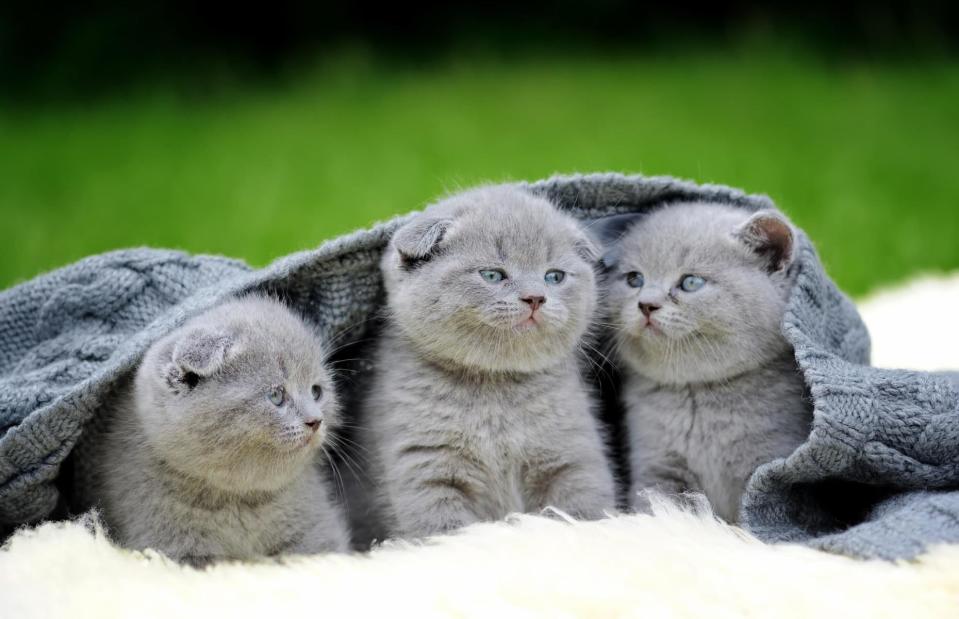
Volodymyr Burdiak/Alamy
Which critters make the cutest babies? From kits and cubs to hoglets and hatchlings, we’ve scoured the animal kingdom to find the 30 most adorable offspring in the natural world, in our humble opinion. We’ve ranked them from ‘aww sweet’ to ‘OMG SO FLUFFY’, so be warned – you may not be able to handle the levels of loveliness.
Read on to discover the planet’s cutest baby animals, as ranked by us…
30. Crocodile hatchlings
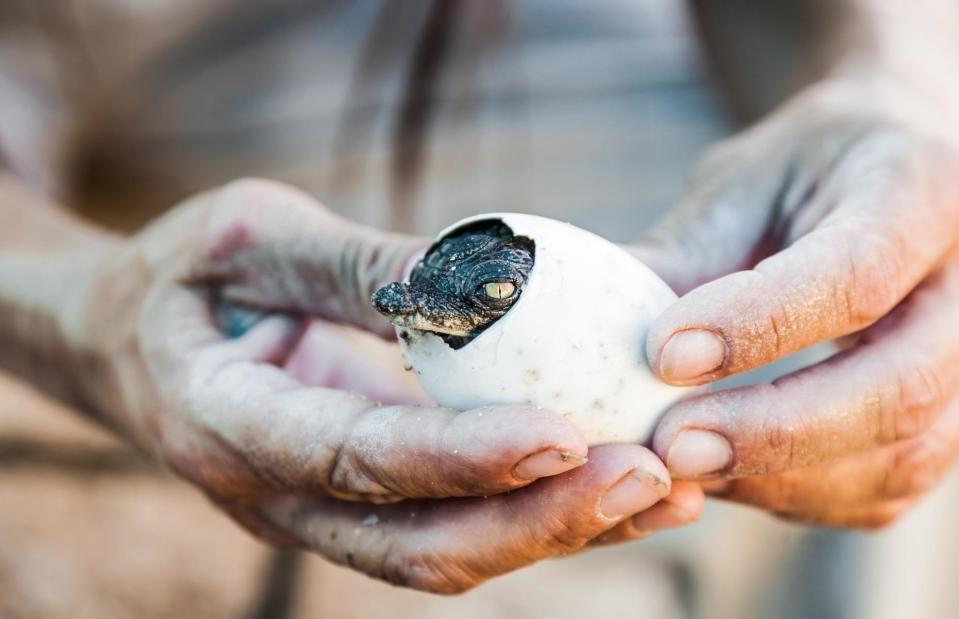
Oleksandr Lysenko/Alamy
This little guy looks like he’s just cocooned himself in a duvet and has no intention of moving. Crocodile hatchlings are born into a ‘pod’ or ‘creche’ of fellow tiny chompers and become known as yearlings once they hit their first birthday – if they’re lucky enough to get there. Sadly the chances of that are around 100 to one. We thought baby crocs deserved a place in this list because, although they grow up into fierce predators, their early lives are far from easy. We’re rooting for you, Snappy!
29. Owlets
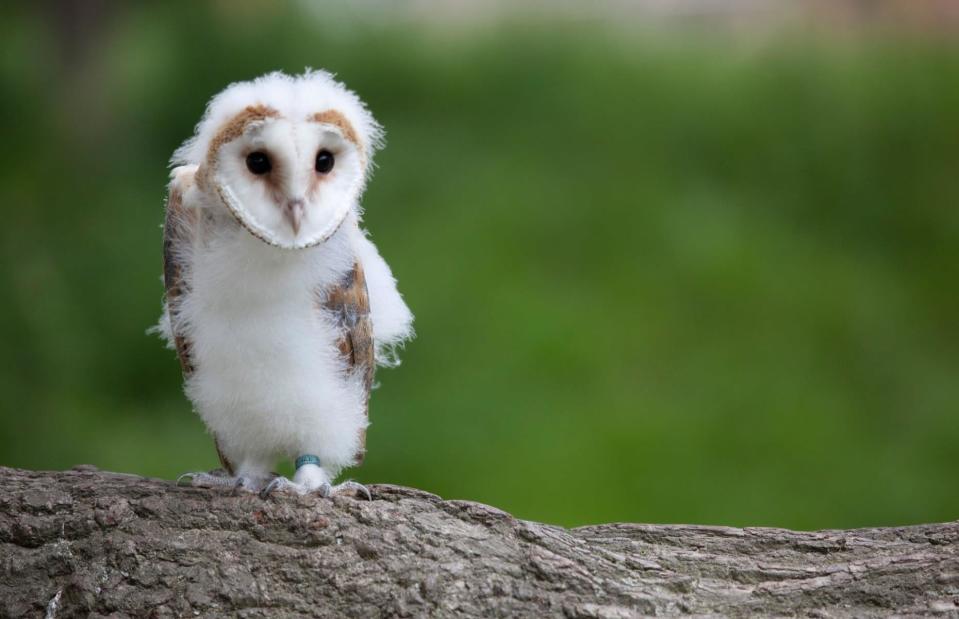
Richard Tadman/Alamy
Owls certainly age like a good cheese, reaching adulthood with silky-smooth feathers and a general air of having it all figured out. This baby barn owl may have misplaced the hairbrush, but just look at those big eyes and the adorable fluff. Owlets are both blind and deaf when fresh out of the egg, and will stay with their parents for around six months before flying the nest. They also sleep a lot – up to 18 hours a day – which sounds like heaven.
28. Meerkat kits
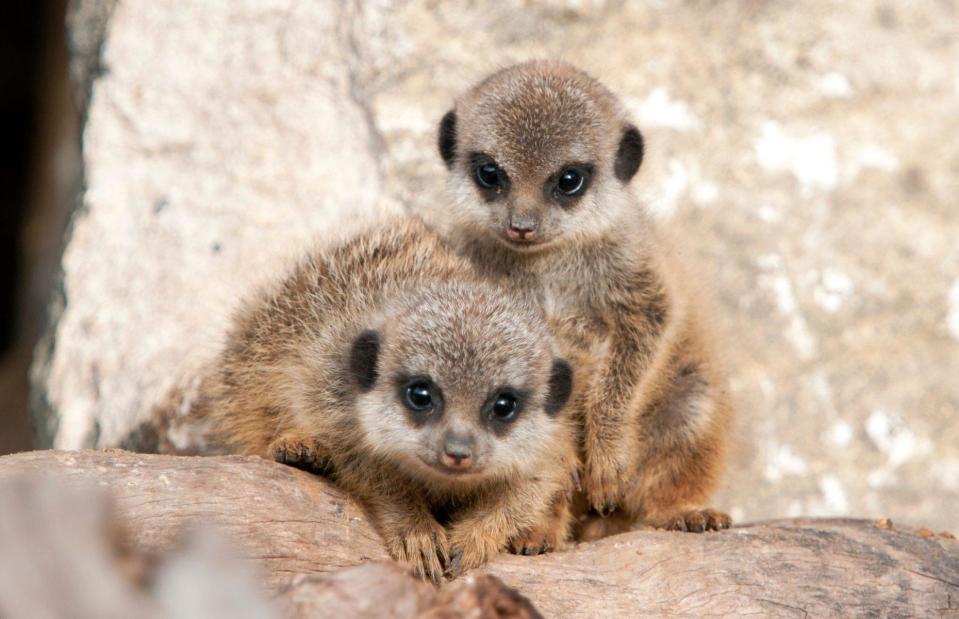
cgwp.co.uk/Alamy
We can sympathise with the parents of this cute little duo, who have mischief written all over their faces. Baby meerkats, also referred to as pups, are born in underground dens to keep them safe and stay there with their mum for the first three to four weeks of life. Newborns, roughly the size of a matchbox, have closed ears and eyes at first, which typically open around 10 days after birth. If their mum has to leave the den to forage for food, they’ll be cared for by a babysitter.
27. Kangaroo joeys
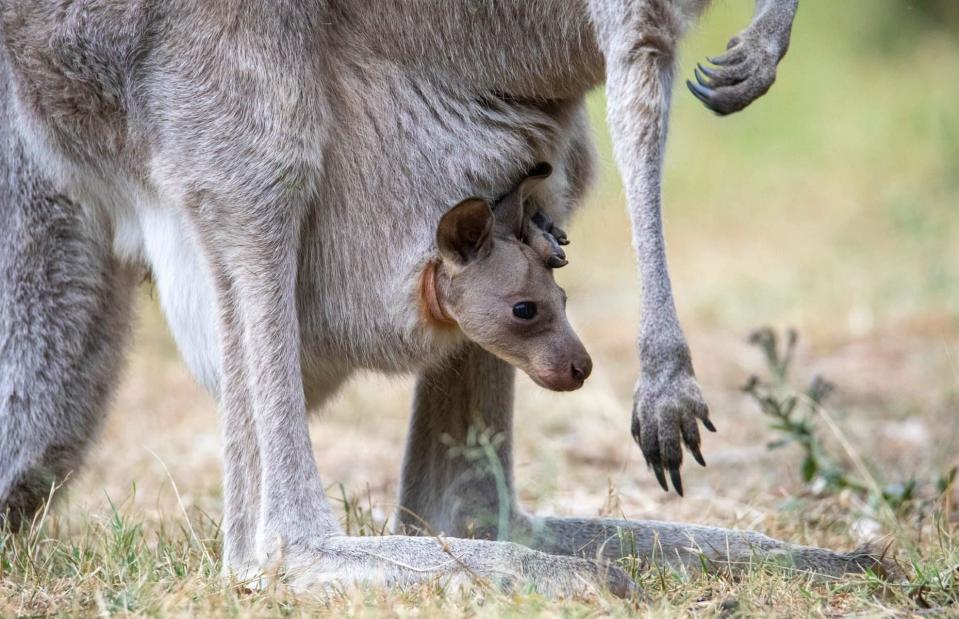
Marc Anderson/Alamy
What a life of luxury it is for a kangaroo joey – being carried around everywhere in a warm, ready-made bed. But it’s a tough journey to get there: kangaroos are just the size of a bean when they are born. They’re so tiny that their mother can’t even touch them, so they have to make their way to her pouch all by themselves. Though they’re the smallest marsupial of all at birth, they grow up to be the largest. This sweet joey is a young eastern grey kangaroo from the Capertee Valley in New South Wales.
26. Llama crias
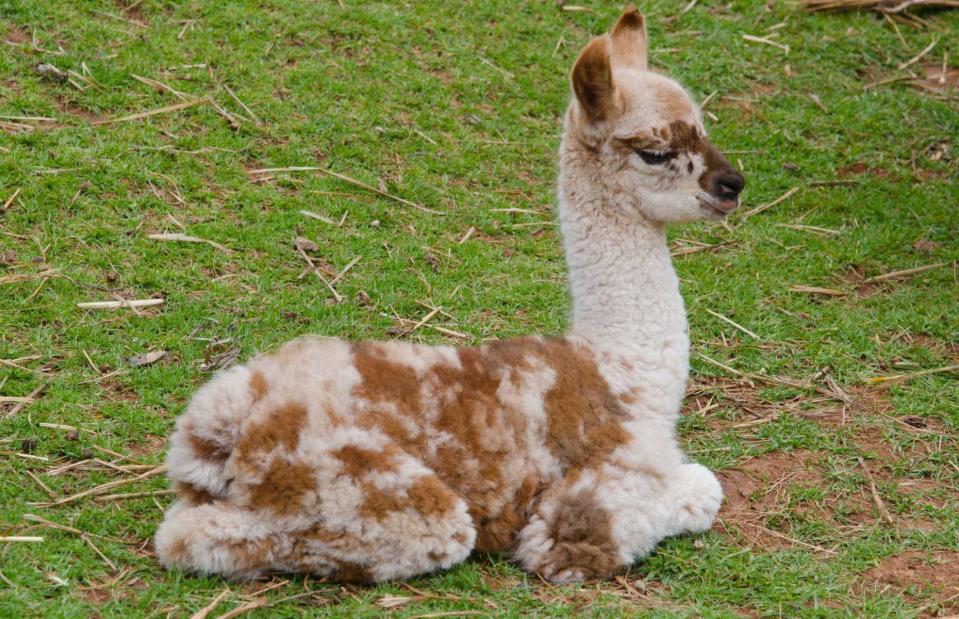
© Bill Bachmann/Alamy
Commonly found in the Andean highlands of South America, llamas are vital in mountain communities for their fleeces and their ability to carry significant weights over rocky terrain. After carrying a pregnancy for almost a whole year (350 days), a llama will usually give birth to just one youngster at a time, a cria (meaning baby in Spanish). Crias can stand within about 90 minutes of being born and are welcomed into the world with a humming sound from their mamas. This little furball is around two weeks old.
25. Tapir calves
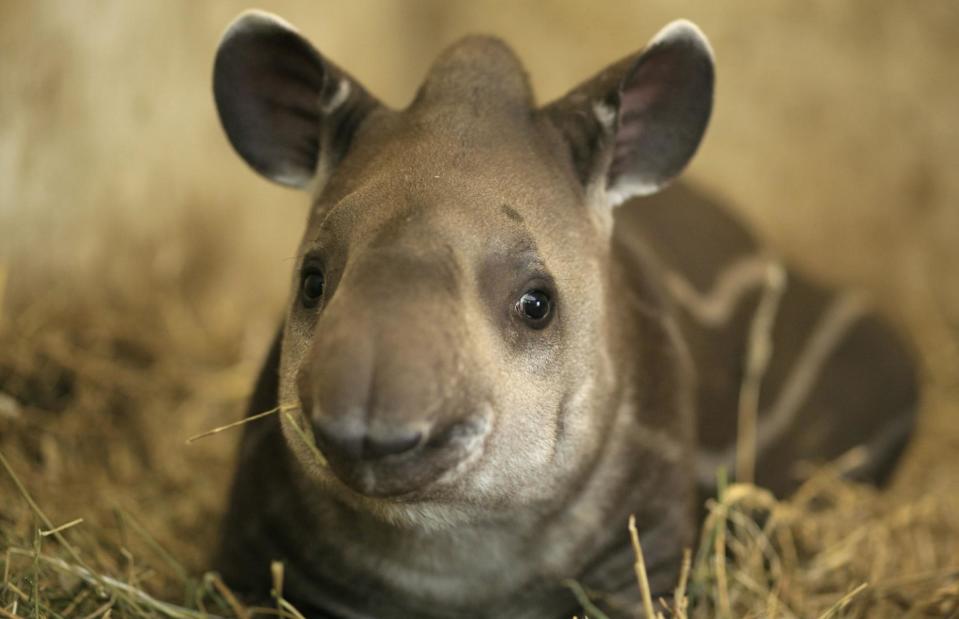
Jack Bishop/Alamy
Described by San Diego Zoo as ‘watermelons on legs’, tapir calves are born with open eyes and brown or beige stripes down their backs. Although these markings start to fade after a few months, they stick around long enough to help camouflage really young tapirs in the wild, especially in the dancing light of the forest. Tapir babies can also swim from a very young age and stay with their mothers for at least a year. With this innocent little face staring into our soul, we’d never want them to leave.
24. Skunk kits
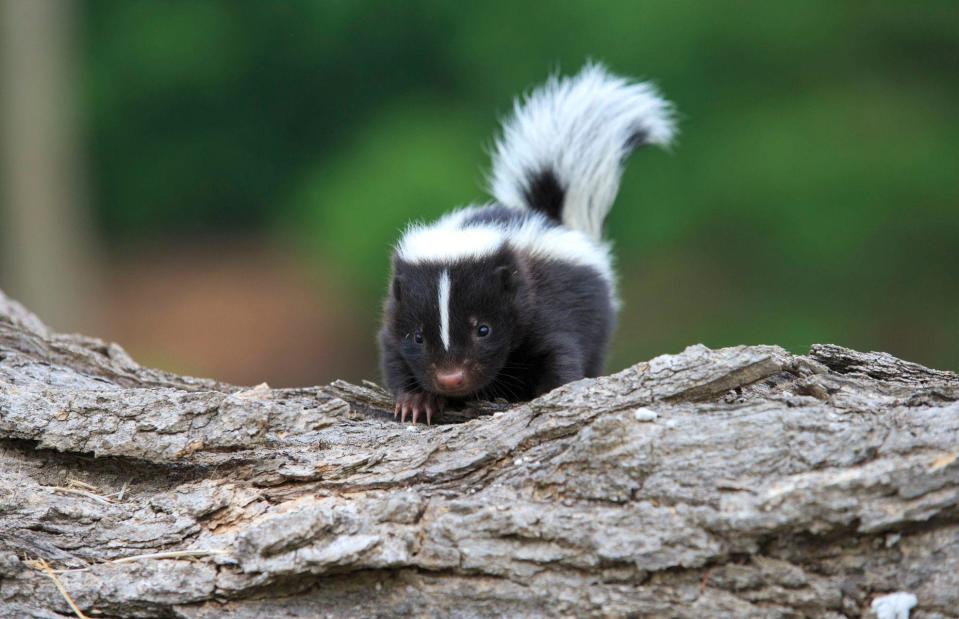
Hemis/Alamy
If you grew up watching Disney’s Bambi, you’ll know exactly what we mean when we say this loveable kit reminds us so much of Flower, the title character’s sweet skunk friend. Baby skunks are typically born in litters of four to seven and are raised solo by the mother (girl power!). Initially they are blind, deaf and toothless, but already have that signature black and white coat. At around a month old, they start practising their spray manoeuvre – cute, but stinky.
Love this? Follow us on Facebook for more nature, travel and history features
23. Southern tamandua pups
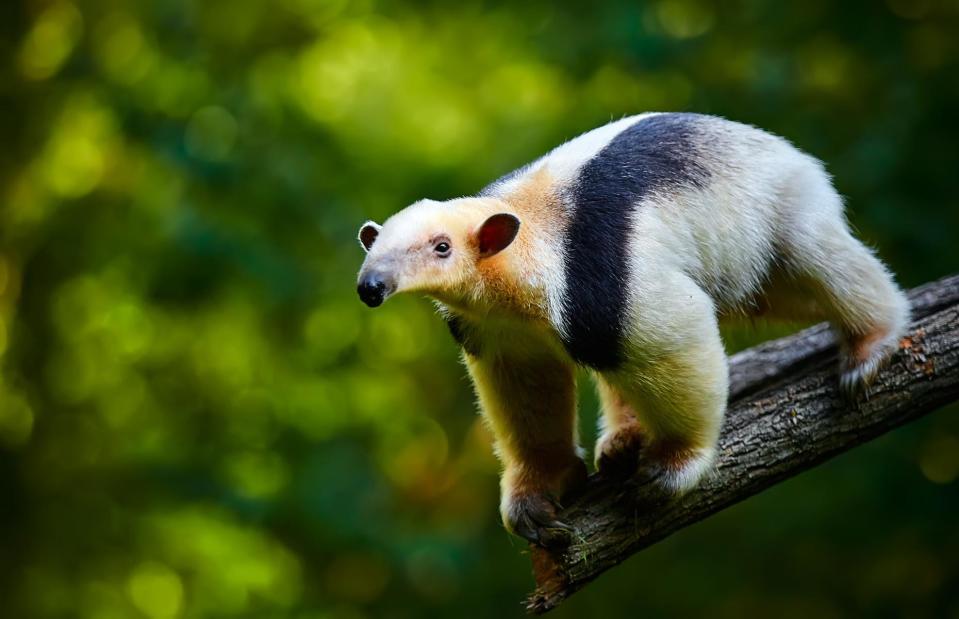
Petr Salinger/Shutterstock
A member of the anteater family, southern tamanduas are native to South America and can thrive in a variety of habitats. A pup takes around 130 to 150 days to develop in the womb, and single births tend to be the norm. Mama southern tamandua will then carry the baby on her back for the first few months of its life and will keep it with her for about a year. This gorgeous pup, living his best life in the Brazilian rainforest, is just wondering if he’ll ever grow into his snout.
22. Ducklings
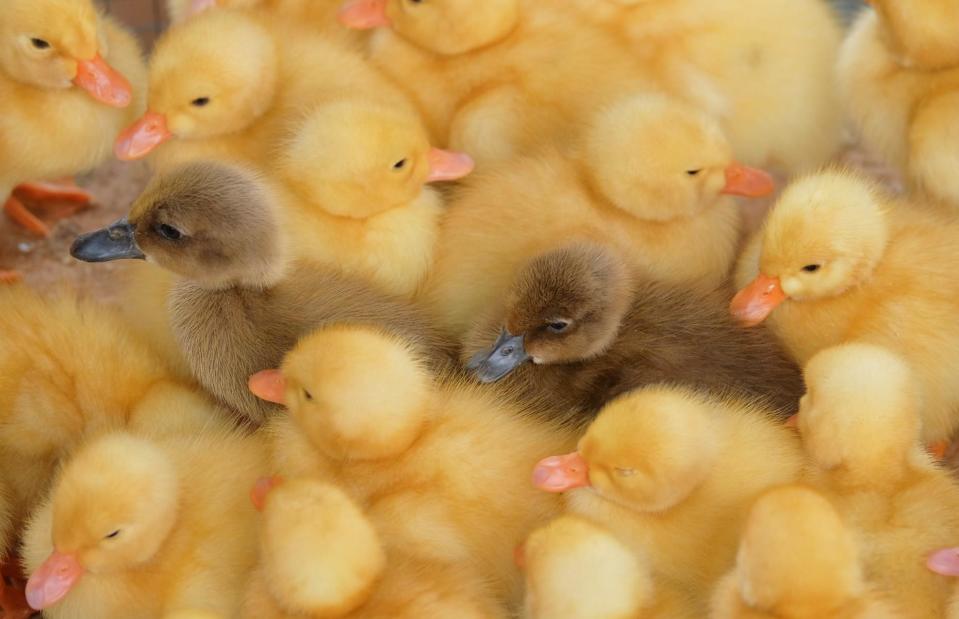
Hary Purwanto/Shutterstock
You’d be ‘quackers’ to not want to get in on this huddle of fuzzy goodness. With their soft downy feathers, adorable tiny bills and little slappy feet, ducklings have got to be some of the cutest babies in the entire animal kingdom. They’re smart cookies too, able to swim and feed themselves almost straight after hatching, following their mum to the water after just a day in the nest. However their down isn’t waterproof, so Mama Duck preens them with a light oily coating to keep them buoyant. As for flying, that fun starts at around five months old.
21. Fawns
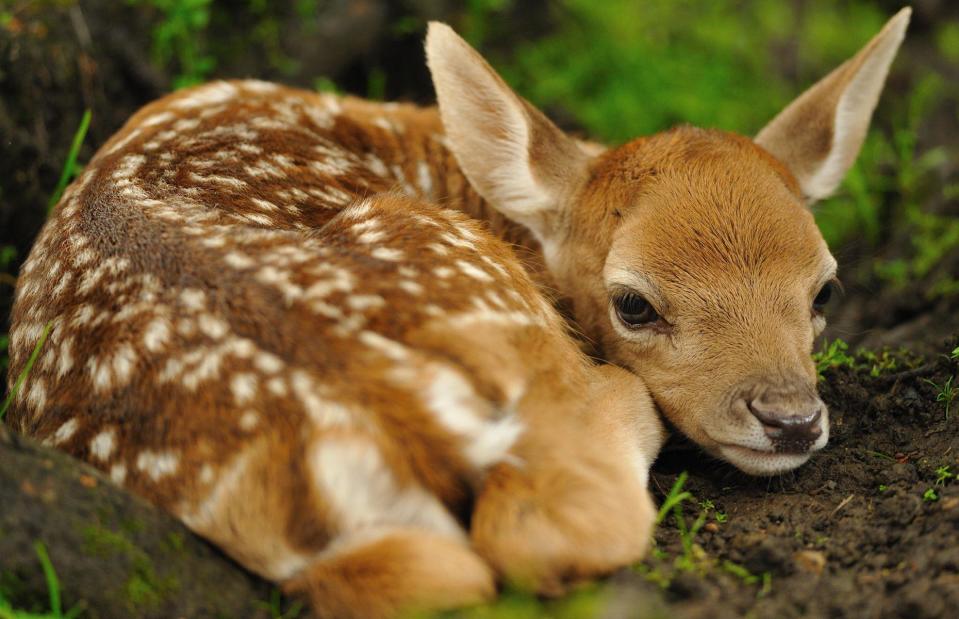
Stanislav Duben/Alamy
Fawns, like this newborn fallow deer, are born with just four teeth while they enjoy a diet of their mother’s milk. After a fortnight, they’ll start experimenting with snacks of grass, leaves and twigs. A baby deer can be one of one, two or three offspring born at the same time, though twins don’t always have the same father. Around 25% of fawn twins can come from two different stags. Like the stripes on a tapir calf, a baby deer’s white spots help them blend into leafy backgrounds – very helpful when they lie down for about 95% of their first 10 days of life.
20. Raccoon kits
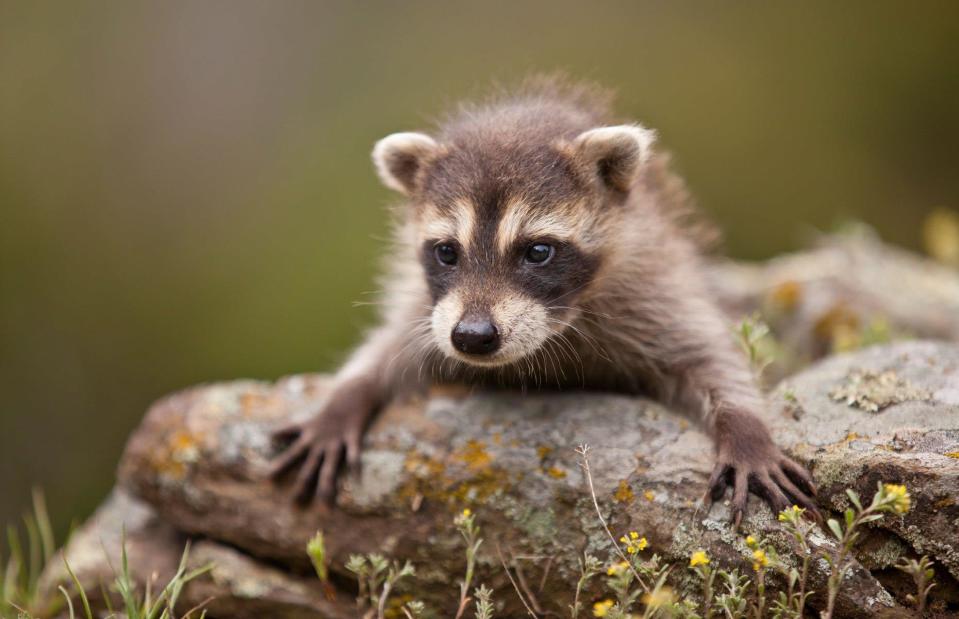
Gillian Merritt/Alamy
Possessing the same spirit that makes them grow up into notoriously naughty trash thieves, baby raccoons are born with an inherent sense of adventure. Their inquisitive nature drives them on nocturnal explorations with their mum, once they’re old enough to leave the den, as they go out into the night in search of food. This little bandit appears to have begun her life of crime early – the eyes, the paws and the stance are saying ‘guilty as charged’.
19. Hippo calves
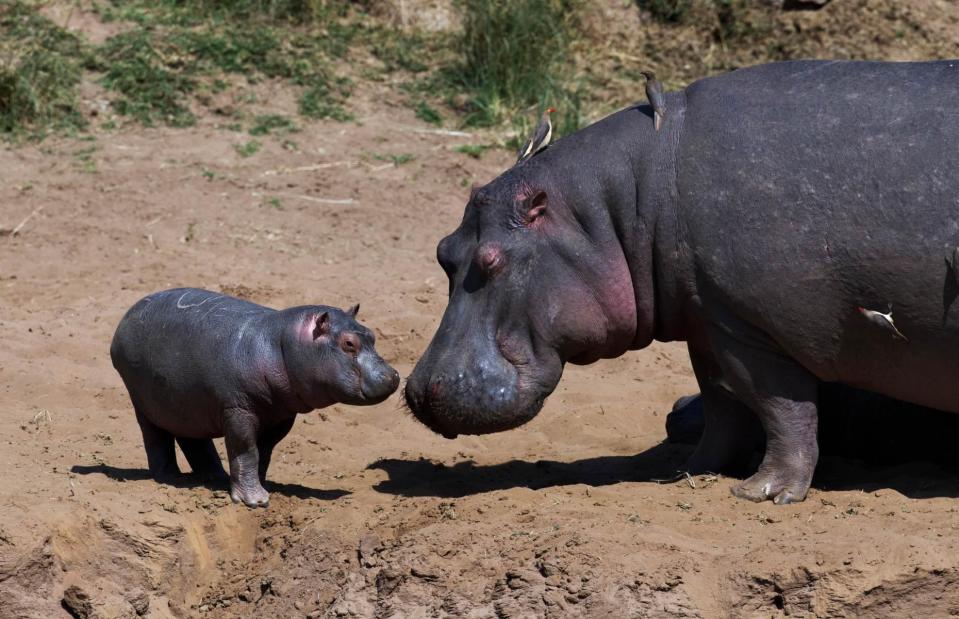
Nature Picture Library/Alamy
Ever seen a baby hippo yawn? It just might be one of the sweetest sights you’ll ever see, with their gummy mouths opening so wide that it makes their tiny little ears wiggle. As you might imagine, the planet’s second largest mammals make some pretty big babies, with some hippopotamus calves weighing in at around 45kg (100lb). Soon after birth, they slip into the shallows with their mums to keep cool and can even feed underwater, closing their ears and noses to prevent any water getting inside. This baby and its mama live in Kenya’s Masai Mara.
18. Beaver kits
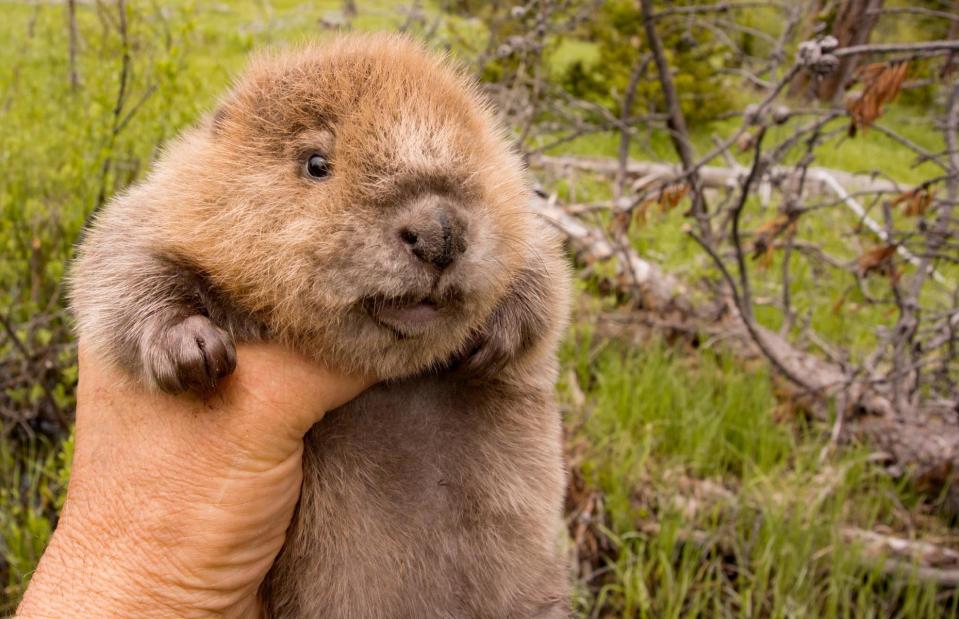
Martin Battilana Photography/Alamy
Born with up to five siblings from the same litter, beaver kits come into the world with their thick, furry coats already intact. They also arrive with open eyes and a full set of gnashers, meaning they can start chowing down on solid food from the second week of their life. Within hours of birth, baby beavers can even start their swimming practice in the safe waters of their lodge, and they’ll stay with their families for at least two years. In spring 2024, Eurasian beavers were born in London for the first time in 400 years, thanks to an urban rewilding project.
17. Lambs
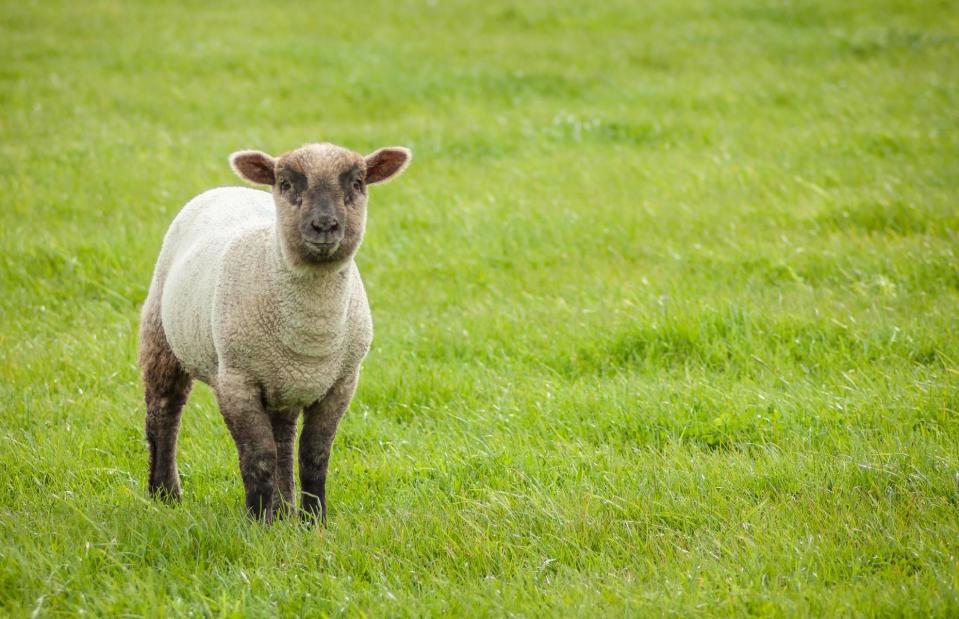
electricpark-photo/Alamy
The smiling face, the curly fleece, the little leaping legs – what’s not to love about a lamb? These baby sheep can walk within moments of being born and depend on their mothers for about half of their first year of life. The arrival of lambs is one of the most gorgeous signs that spring has sprung, as they frolic in green fields among the buttercups and daisies. There are over 200 different breeds of sheep in the world, from the grey Herdwick of England’s Lake District to the shaggy Karakul of Central Asia and the woolly Merino of Spain.
16. Emperor penguin chicks
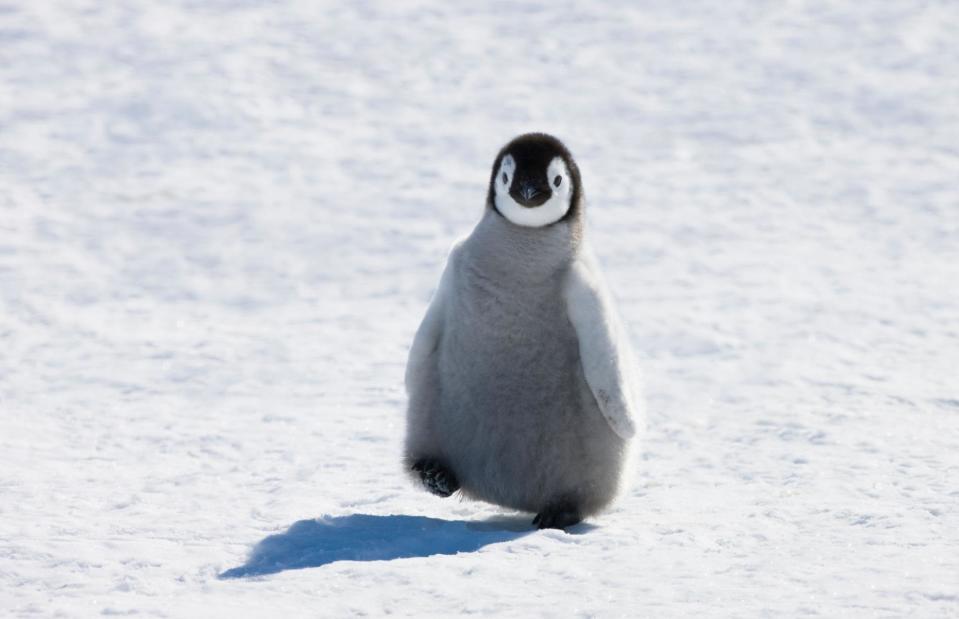
Keren Su/China Span/Alamy
Like a scene straight out of Happy Feet, this fluffy bundle is taking his wee flippers for a spin on the ice of Antarctica’s Snow Hill Island. Emperor penguin chicks look very different to their fully-grown counterparts, who waddle around with their black, white and yellow wetsuits. Babies are born without their waterproof plumage and instead have grey jackets of down until they get their adult feathers at around five months old. Unlike many fathers in the animal kingdom, male emperor penguins play a very active role in parenting, even when the chick is still just an egg.
15. African pygmy hoglets
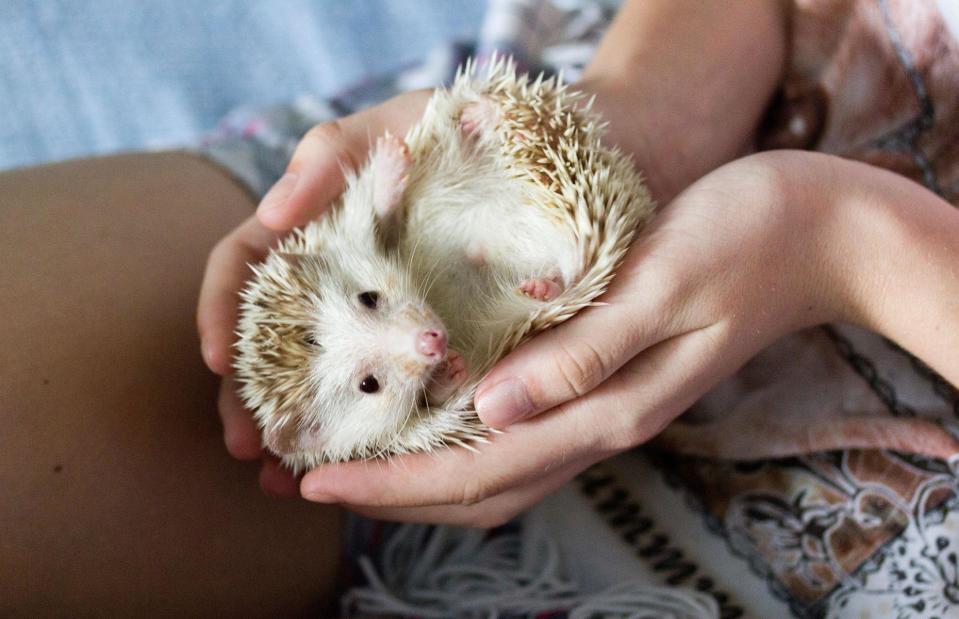
Aleksandar Kitanovic/Alamy
Sure, a regular baby hedgehog is adorable enough, but the hoglets of an already-miniscule African pygmy hedgehog take the cute factor to new heights. So as not to give their mums a spiky surprise, babies are born with their quills just under their skin, which begin to pop out within mere hours of life. Sadly the cuteness of pygmy hedgehogs also works against them and they have become popular exotic pets. But according to the RSPCA, African pygmy hedgehogs need space to roam, are nocturnal and have complex dietary requirements, so they are naturally suited to domestic life.
14. Infant orangutans
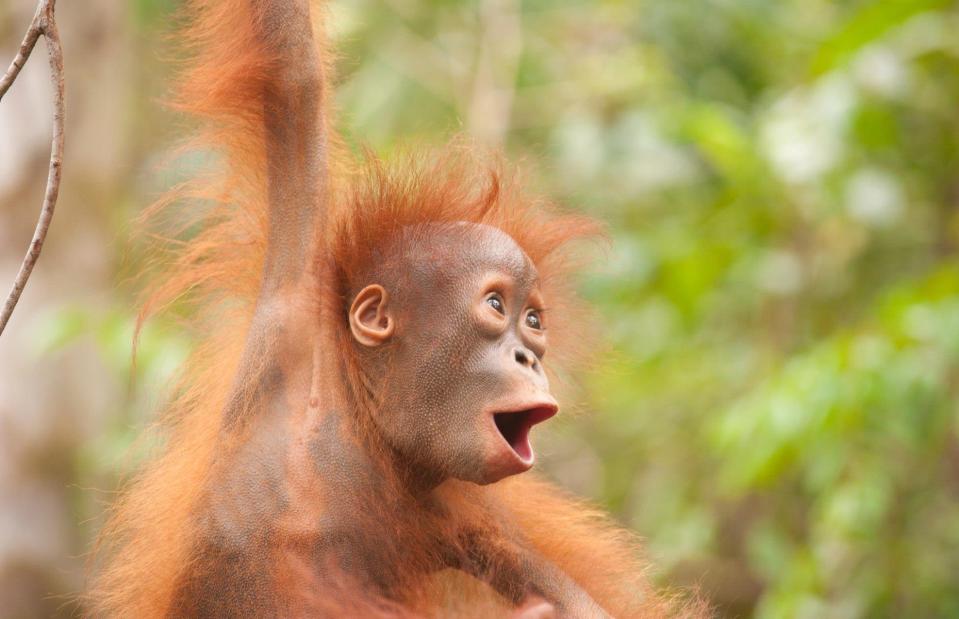
Ian Wood/Alamy
Orangutans are proper mama's boys and girls, staying with their mothers until they reach the age of seven. While they're still small enough, infants hitch a ride on their mums’ fur, learning everything about life in the rainforest. When a young orangutan following its mother is presented with a gap in the trees too wide to cross, Mama lays down her body to create a bridge between the branches. This diddy chap has clearly been playing with the party balloons again – his shock of static red hair is so wild that you might think this photo is blurry.
13. Lion cubs
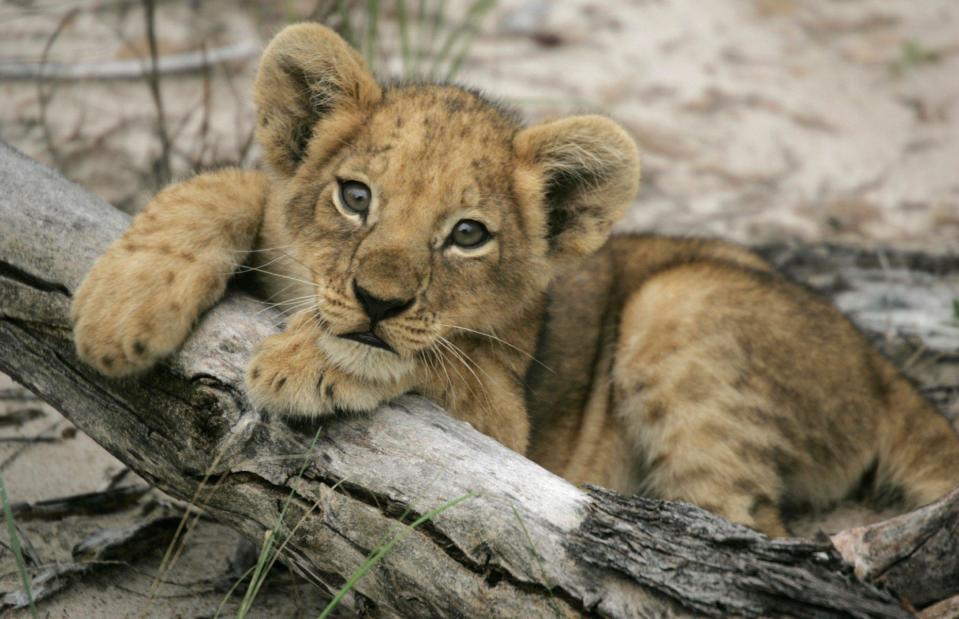
AfriPics.com/Alamy
Lion cubs are a particularly favoured animal baby among millennials (and their parents), who spent endless childhood hours rewatching Disney's The Lion King and reading Michael Morpurgo's The Butterfly Lion. From their chunky paddy-paws to their tufty half-moon ears, baby lions can melt even the hardest of hearts with just one look. Upon opening their eyes three to 11 days after birth, lions will soon start to walk and have adventures. But Mama will only reintroduce her offspring to the rest of the pride when they're about two months old, as she keeps them hidden for their safety.
12. Kittens
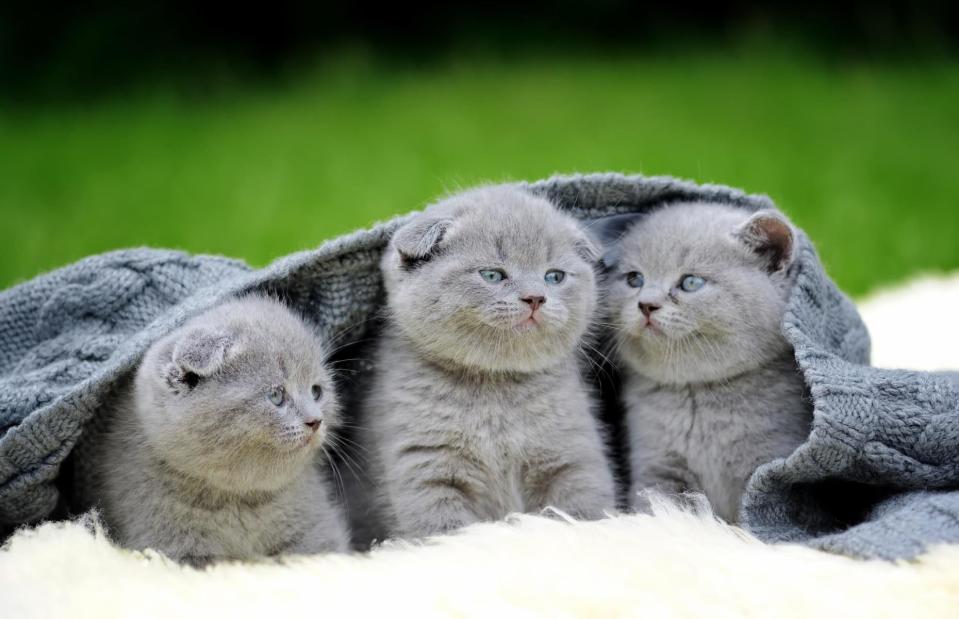
Volodymyr Burdiak/Alamy
Kittens have long provided a balm for the soul, with busy friends and weary work colleagues often choosing to communicate through the exchange of cute kitten photos and videos. These cuddly creatures are always born with blue-grey eyes – some breeds, like the Siamese, keep this colour for the rest of their lives, while others’ peepers will change pigment as the cat ages. By just four weeks old, kittens already have a fully developed sense of smell and their hearing is sharpening too. Did you know cats have one of the best hearing capabilities of all land mammals?
11. Donkey foals
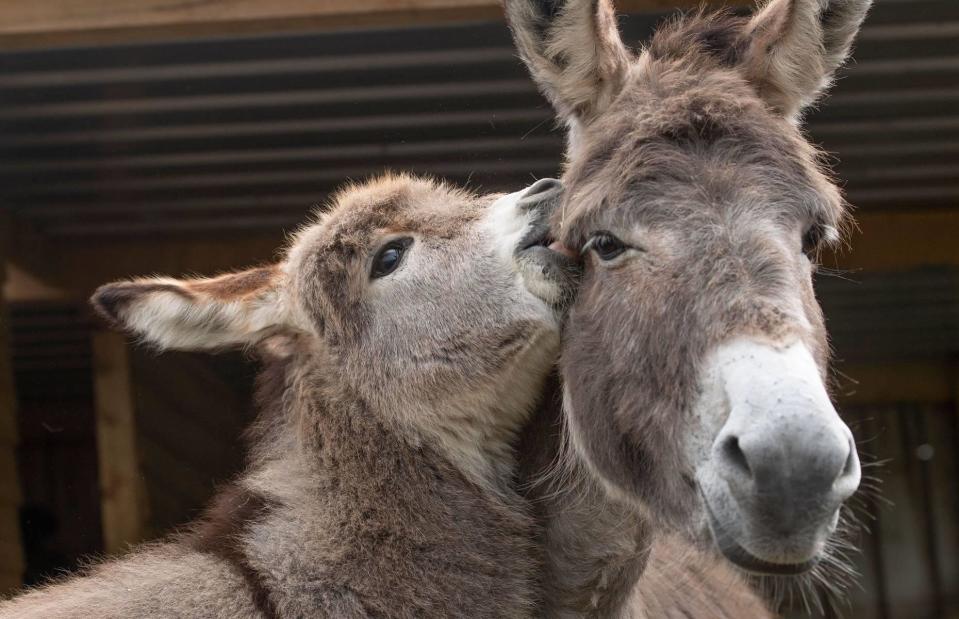
Farlap/Alamy
These animal babies arrive in the world without the pricked ears of their adult counterparts, instead sporting big floppy ears that – together with the four long, wobbly legs that they’re still figuring out – make them impossibly adorable. Donkey foals can stand almost immediately after birth, but it takes a little while longer for the confidence and balance skills required to manage such lengthy limbs to grow. They’re also remarkably intelligent and a master at memory games. As a baby donkey matures, they can remember faces and places they’ve encountered for up to 20 years.
10. Polar bear cubs
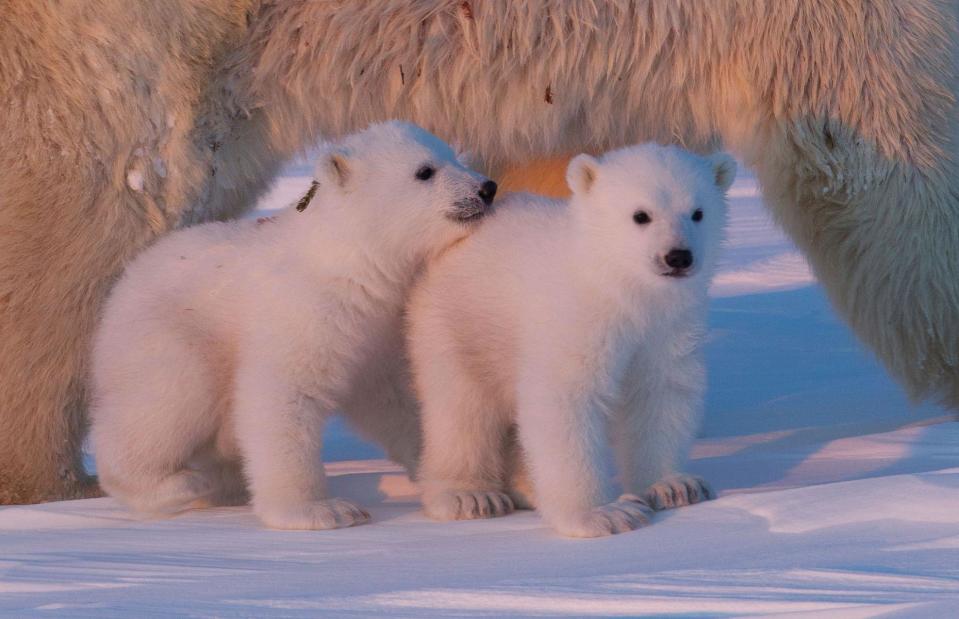
robertharding/Alamy
Looking at these tiny twins, who were spotted in Wapusk National Park in northern Manitoba, it’s hard to believe that polar bear cubs grow up to be the biggest of all the world’s bears. How they grow in the mother’s womb is even more mind-blowing – female bears can pause their pregnancy by delaying implantation, a process called embryonic diapause. This ensures her and her babies have the best chance of survival, by waiting until she can consume enough calories to support them all through the challenging early stages of raising cubs in the unforgiving Arctic.
9. Piglets
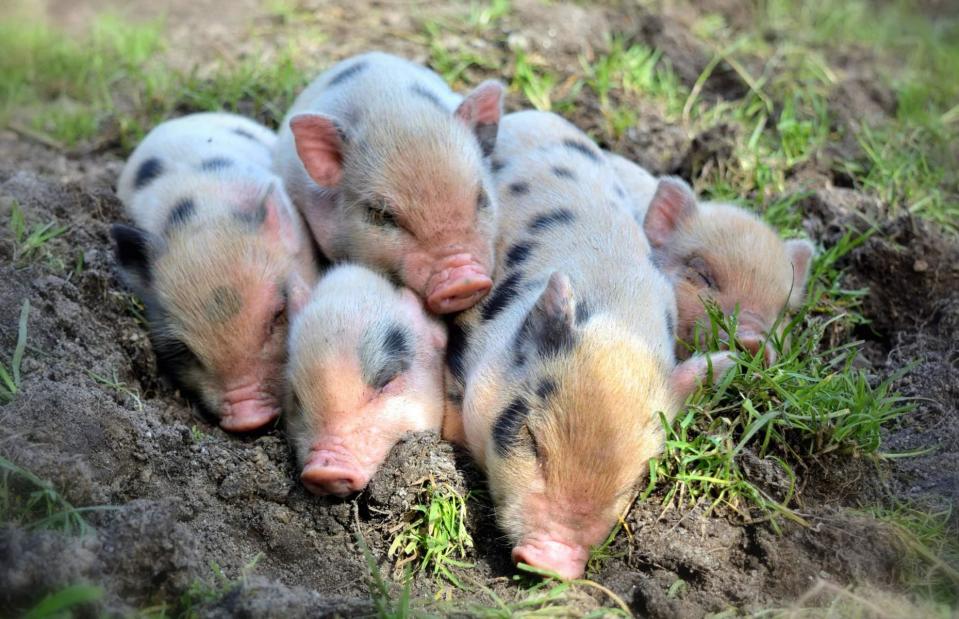
Mathias Kannegaard/Alamy
Even snoozing with smiles on their faces, piglets just nudge into our top 10. We love their wrinkled little snouts, dinky pink ears and teensy trotters, but did you know that pigs have brains as well as beauty? In fact, they are among the most clever of all domesticated animals and are even smarter than dogs. Even from a young age, piglets have an exceptionally keen sense of smell and taste, meaning they’re discerning foodies right from the off. Known for their playful and curious nature, baby pigs are – perhaps surprisingly – also adept swimmers and are naturally drawn to water.
8. Otter pups
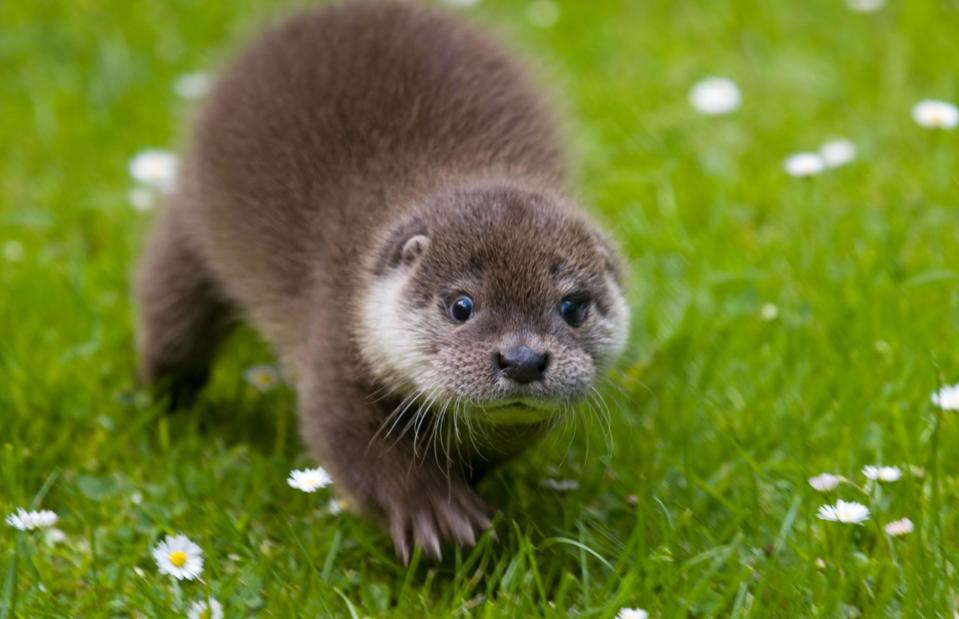
Chris Reynolds/Alamy
Though they spend much of their lives slinking about in the water, otter pups can’t actually swim until they’re between four and nine weeks old. They are however still buoyant, so can float around on the surface without any nasty consequences. Then when a mother otter leaves to hunt for food, she uses kelp to safely anchor her baby so that it doesn’t drift away (imagine explaining that one to the cops). Otter families are also very hands-on, with even older siblings taking a turn raising young pups and teaching them important life skills.
7. Snow leopard cubs
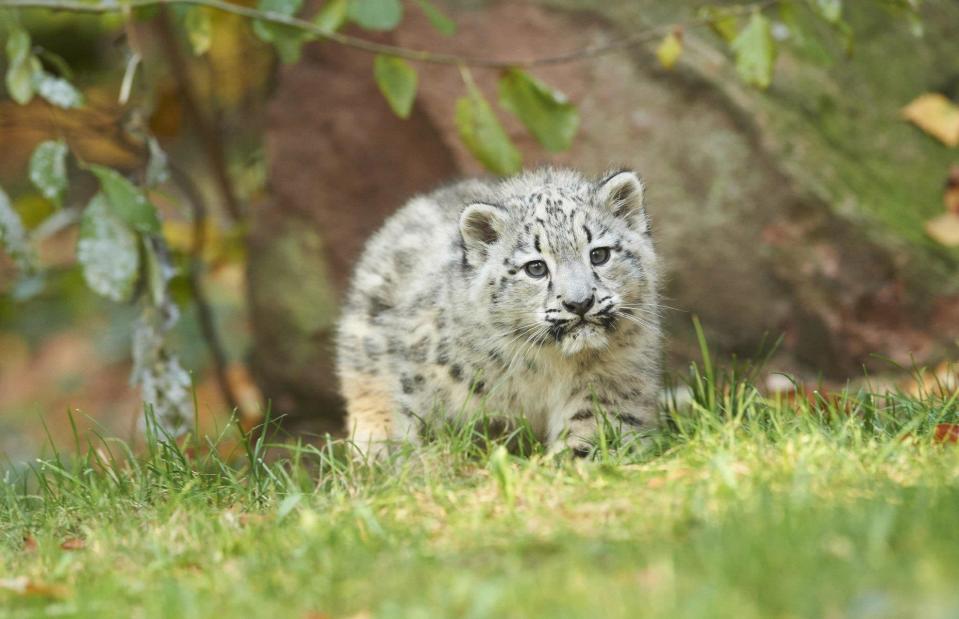
Tierfotoagentur/Alamy
Born into the harsh Himalayas, there’s still so much we don’t know about snow leopards – and there could be as few as 4,000 left in the wild. These elusive felines give birth at high altitudes, which helps protect cubs (already cloaked in thick furry coats) from other predators, though humans are their biggest threat. The majority of snow leopard births occur in June and July, with cubs raised by single, solitary mothers. Living amid jagged peaks and rocky bluffs means snow leopard cubs hone their jumping prowess from a young age.
6. Turtle hatchlings
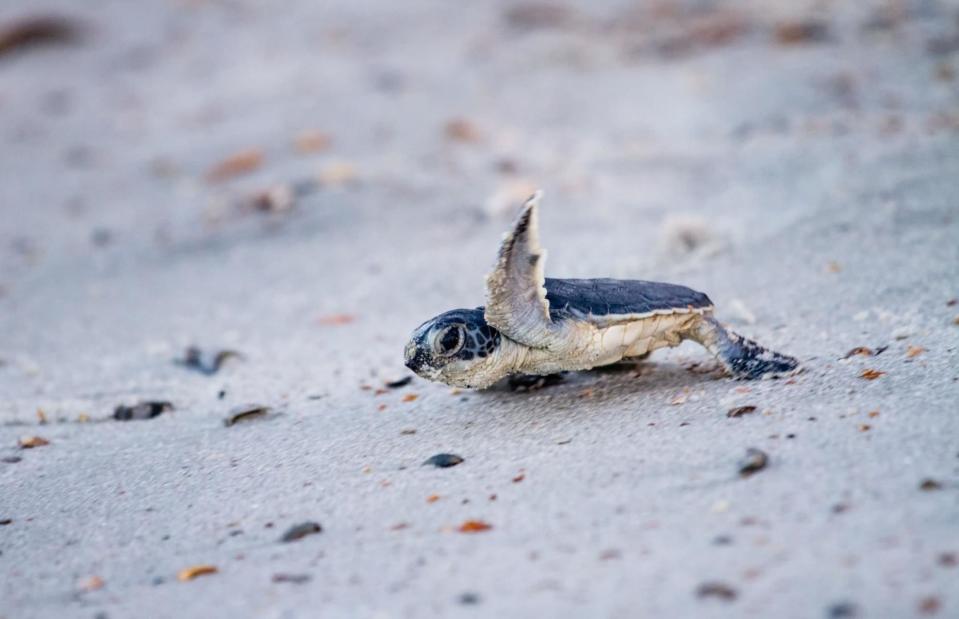
Dawna Moore/Alamy
In order to coordinate their hatch, some baby sea turtles are able to communicate with one another while still in their eggs. This strategy is said to greatly increase the hatchlings’ chances of survival as they make the long and perilous journey from their sandy birth site to the ocean. It’s a trip fraught with danger as their tiny flippers go hell for leather, sprinting across the beach while dodging hungry birds ahead. The odds are stacked against them – only one in 1,100 hatchlings is lucky enough to see adulthood – so we stand in solidarity with these sweet, shell-backed squirts.
5. Rabbit kits
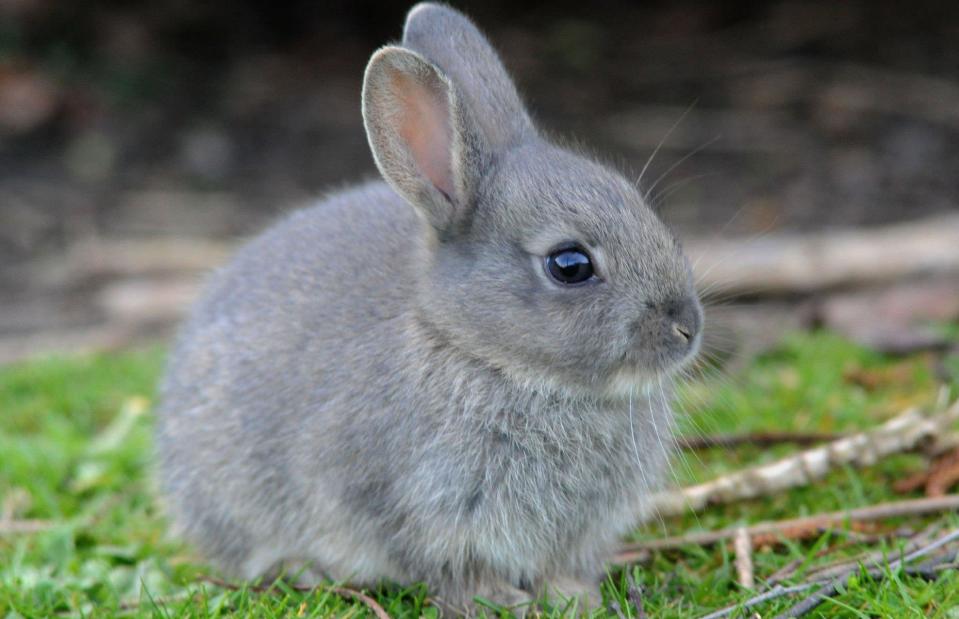
Karen Parker Photography/Alamy
This could be the most brain-bustingly precious thing we’ve ever heard – one of the group nouns for rabbits is a ‘fluffle’. And what could be cuter than a fluffle of rabbits than a fluffle of baby rabbits!? Once they get past the bald newborn phase, rabbit kits blossom into gorgeous soft bundles of happiness. By around four weeks old, they’ve got their full fluff quota, as well as a complete series of functioning senses. Like humans, young rabbits get two sets of teeth, but unlike us, their adult front incisors never stop growing.
4. Puppies
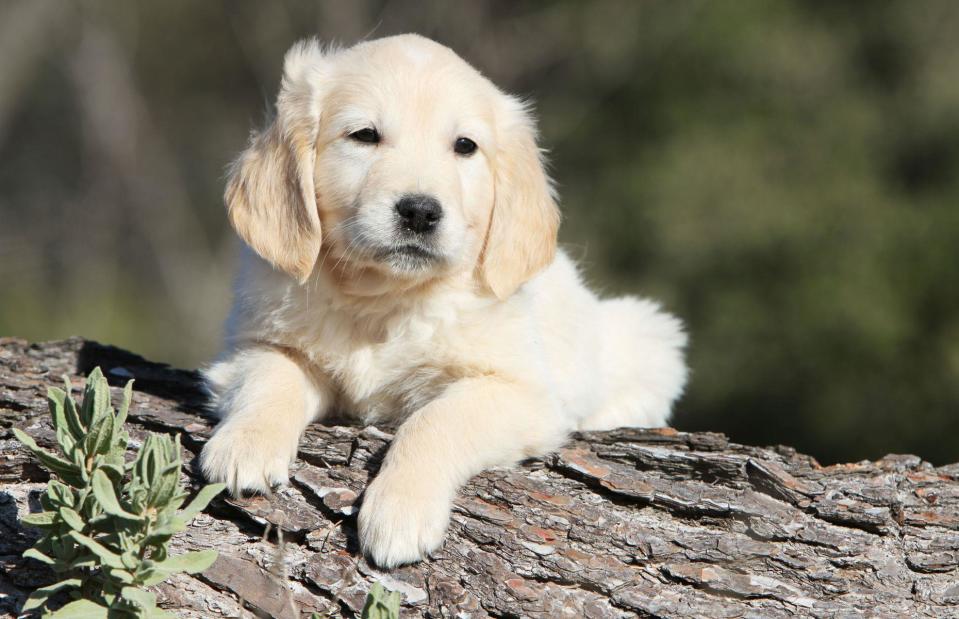
GROSSEMY VANESSA/Alamy
From Yorkshire terriers to Tibetan mastiffs, we’ve never met a puppy we didn’t immediately fall for. The combination of imploring eyes, soft fur, bouncy ears and tiddly toe-beans has age-old power to disarm.. But this isn’t just surface-level stuff – scientific and philosophical research has shown that puppies activate our innate caregiving mechanism. They also, on average, score higher for objective cuteness than kittens and even human babies. While it can be tempting to wake up your dozing puppy for cuddles, napping is crucial for their cognitive and physical development (which is an excuse we’re definitely using next time we fall asleep on the sofa).
3. Seal pups
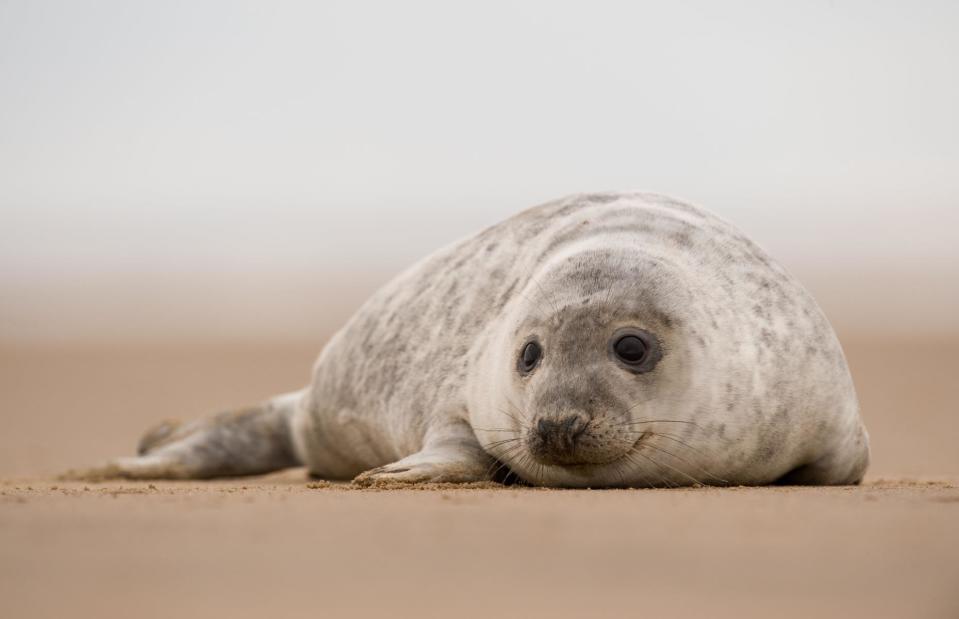
Lee Webb Nature Photography/Alamy
Baby seal or baked potato? This chunky grey seal pup lounging on a Lincolnshire beach is the epitome of cuteness. Like many animals, mama seals and their offspring have an unmatchable bond – mothers can pick out the call of their pups amongst a sea of other voices. Cape fur seals, for example, can identify their babies’ sounds within just two hours of giving birth. Building up blubber is an important first step in a seal pup’s survival, as many of them are born into cold climates and need that extra layer of insulation. Good job mama’s milk contains up to 60% fat.
2. Elephant calves
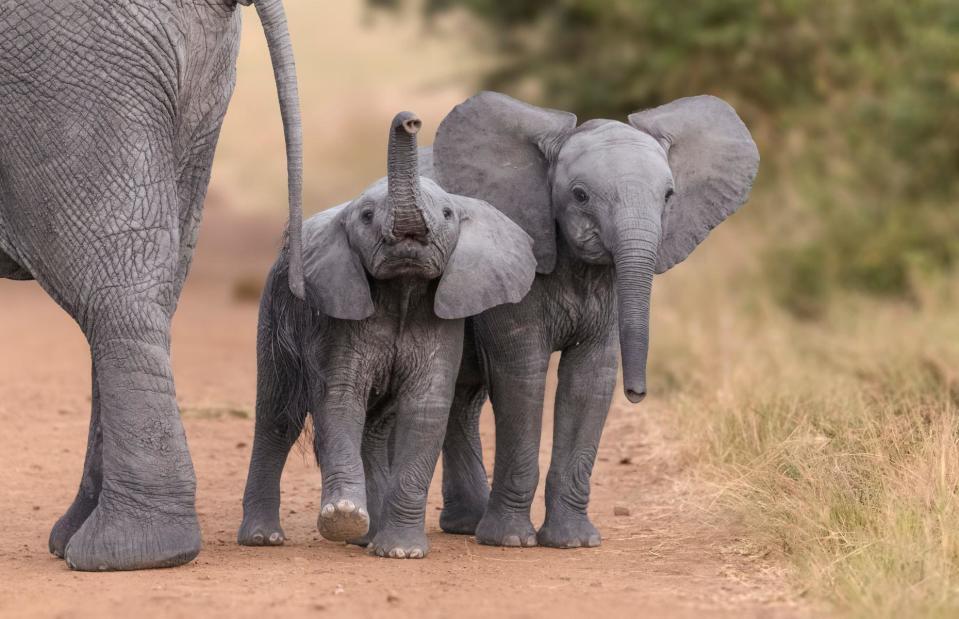
Carole Deschuymere/Alamy
Where do we start with baby elephants? If the dinky trunks flailing around helplessly aren't enough to break your heart, then the oversized ears and pink gummy smiles are bound to do it. Elephant calves under the age of three are particularly charming and cheeky, mimicking their elders and picking all manner of strange things in the bush as they work out how to use their fifth limb, which can also act as a pacifier for very young babies. This darling duo is just taking a walk with the family in Kenya’s Amboseli National Park.
1. Panda cubs
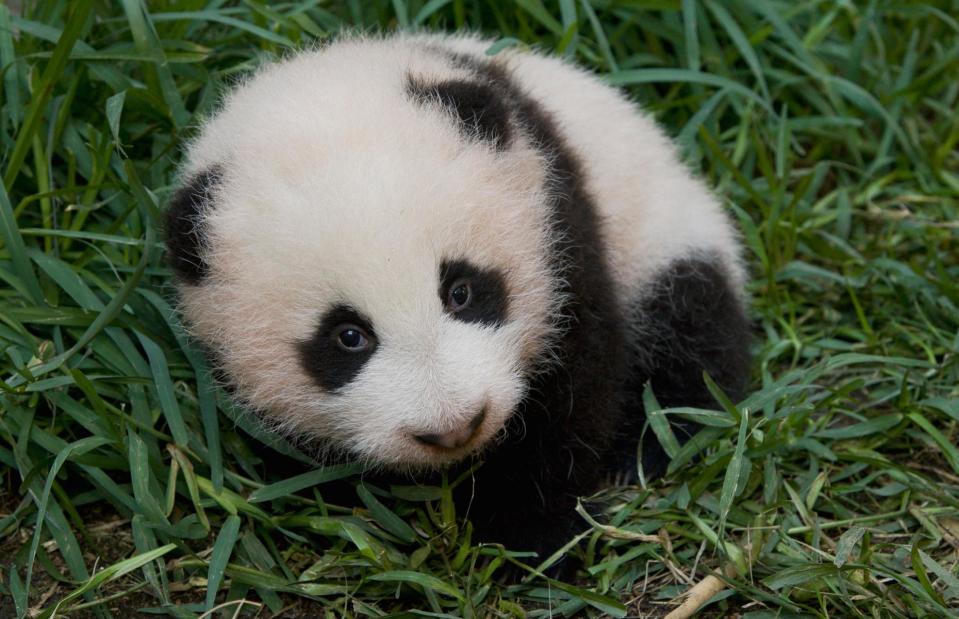
Minden Pictures/Alamy
They may not make the prettiest newborns (all pink, hairless and just 1/900th the size of their mamas), but baby giant pandas soon become absolutely irresistible. Part of what makes them so loveable is that it's a miracle they even exist. Pandas are notoriously bad at breeding – females have a fertile window of just 40 hours each year, so every rare baby is a blessing. And while the bears have been previously classified as endangered, their numbers are finally rebounding. So hopefully we get to admire the cutest kids in the natural world for many more years to come.
Now read on for 30 bizarre animals facts you won't believe are true


